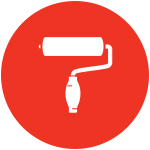Being a homeowner comes with a lot of pressure. From lawns to roofs, there’s a ton of stuff to keep running, repaired, and reasonably priced at any given time. The bad news is that your basement is no different. While it might just seem like a convenient place to put the washer/dryer or store your old stuff, basements take some attention each year to keep them in tip-top shape over time.
Just like your roof, which is another place to which many homeowners don’t pay enough attention, the basement represents a wide variety of risks. Some of these risks are relatively easy to address, like too much humidity or moisture down there, which can be remedied with a relatively inexpensive humidifier. But if undiscovered water starts seeping into the ground around your home, it could increase the hydrostatic pressure around your basement, causing cracking and by extension, allowing more moisture in, which can cause mold and rot, among other risks. That’s an expensive fix.
However, if responsible homeowners follow a few simple routines, these risks can be mitigated or avoided entirely. Here are a few tips to maintain your basement correctly over time.
 1. Clean Your Rain Gutters!
1. Clean Your Rain Gutters!
We’ve said it before and we’ll say it again: we know it’s a gross, bothersome chore but for the sake of your home and your family, either get up there or hire someone to clean outyour filthy gutters a couple of times a year. Gutters that are cluttered with sticks, leaves and debris funnel rainwater around the perimeter of your home, which could lead to leaks or cracking in your basement.
 2. Install a Water Leak Alert
2. Install a Water Leak Alert
If you don’t know the water is getting in, you can’t do anything about it. It’s a good, relatively inexpensive idea to install water alert leak detectors in areas in your basement that might be at risk including furnaces, boilers, water heaters, sump pumps, room corners, etc. In this modern day, you get a wide choice, too. You can buy small units with simple audio alerts or sophisticated smart home water leak alarms that can be monitored remotely via your smartphone or tablet.
 3. Check Your Yard’s Grading
3. Check Your Yard’s Grading
If you don’t know already, grading is the degree to which your foundation slopes away from your home so that water flows away from the foundation, and not into your basement. Here’s a couple of standards to use. Some way that the grade should fall a minimum of six inches over the first 10 feet away from the house. You can also think of this as a two percent grade, which ensures a one-foot slope for every 50 feet of yard that you have.
 4. Take Some Physical Precautions Inside Your Basement
4. Take Some Physical Precautions Inside Your Basement
There are a wide variety of preemptive actions you can take inside your basement to reduce water risk. Whether the basement is unfinished or not, you can apply water-resistant paint to the walls to deflect moisture. Covering exposed insulation will reduce the risk of vapors that can irritate your family’s mouths and throats. Getting rid of basement carpeting, which can attract mold, and replacing it with vinyl flooring is always a good idea. Naturally, dehumidifiers and sump pumps are useful tools, too.
Many people also use the basement as a laundry room; the machines are fine but avoid drying the clothes on a line inside because the moisture evaporates into the basement.